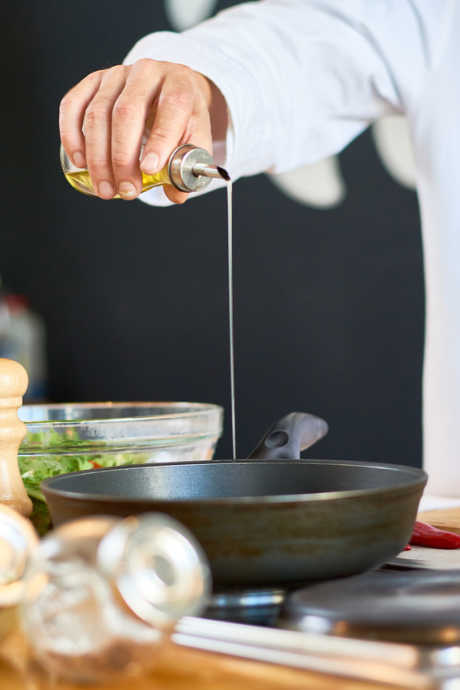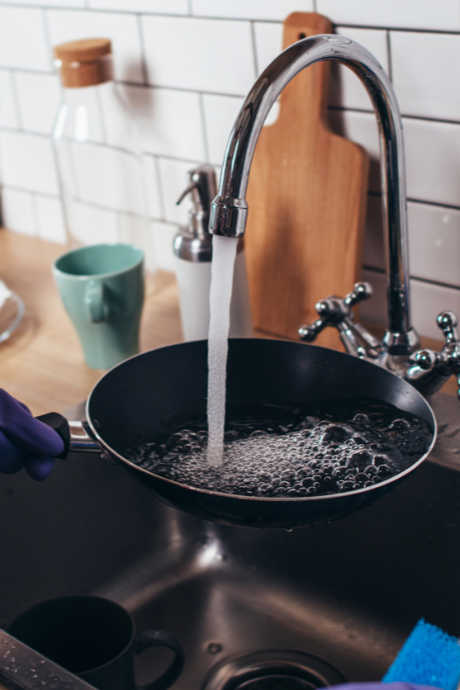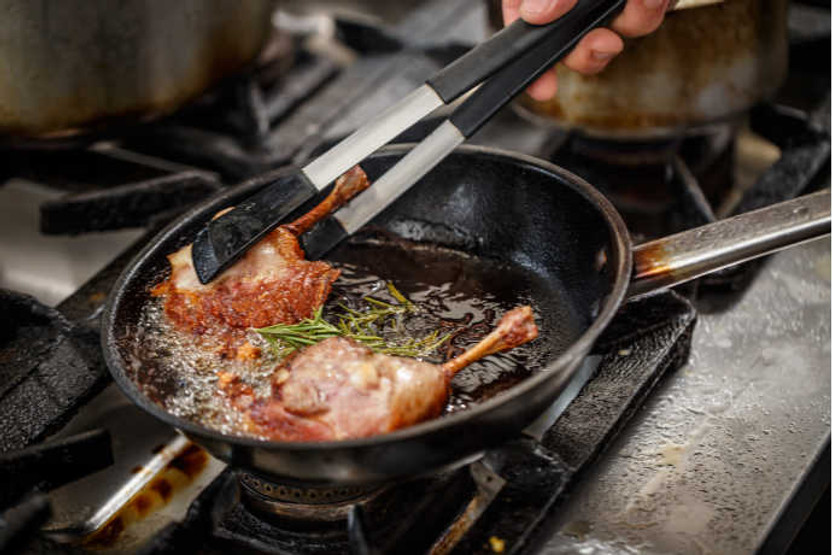Carbon Steel Cookware Is a Kitchen Gem
Posted by Julie on Feb 21st 2019
At first glance, cookware might seem to be a jumble of pots and pans that all look the same. We created a series of posts on types of cookware (including stainless steel, cast iron, nonstick, and copper) to help clarify the major differences. However, we didn’t cover carbon steel, which is such a wonder that it deserves its own post.
What makes carbon steel cookware such a standout? We’ll discuss the material itself, along with performance and care of these wonder pans. You might find yourself determined to own one too.
Basics of Carbon Steel Cookware
Carbon steel is a great example of how even the smallest differences at the elemental level can have a huge impact on the properties of materials. A comparison of carbon steel and cast iron helps illustrate these differences. For one, their names are misnomers: Carbon steel contains less carbon and more iron than cast iron. Carbon steel contains only 1% carbon (and the remainder is iron) whereas cast iron may contain up to 3% carbon.
Additionally, the lower carbon content in carbon steel gives it different properties than cast iron. Cast iron is hard and brittle; it can be cracked or shattered. Carbon steel is strong but malleable; it can be bent and shaped, but not broken. Molten cast iron is poured into molds to make pans, while solid sheets of carbon steel are formed into pans.
Another key difference seen in carbon steel pans compared to cast iron is the shape of the pan itself. Most cast iron pans are shaped like sauté pans, with high straight sides. On the other hand, carbon steel pans are shaped like skillets or fry pans, with sloping sides.
Pros and Cons of Carbon Steel Cookware
What’s so great about carbon steel that makes it deserving of a separate post? Let’s run down the pros and cons, particularly as carbon steel compares to other types of cookware.
Lighter weight: A carbon steel pan weighs less than a cast iron pan. Of course, carbon steel isn’t as light as aluminum; it’s still steel. But a carbon steel pan is easier to lift, especially when tossing ingredients as you cook.
Easy to season: Like cast iron, carbon steel requires seasoning. However, the smooth surface of carbon steel makes the process much easier. In fact, Cooks Illustrated marveled at how quickly a carbon steel pan acquired a nonstick surface.
Nonstick performance: Since it’s simple to season carbon steel, it follows that these pans deliver nonstick performance without the drawbacks of nonstick cookware. While cast iron becomes more nonstick over time, it’s never going to be a top choice for cooking eggs the way manufactured nonstick cookware is. But properly seasoned carbon steel can be just as good for searing steak as it is for scrambling eggs.

Heat retention: Like cast iron, carbon steel stays hot. But it also takes less time to heat up, because carbon steel pans are generally thinner than cast iron.
Oven safe: Carbon steel goes from the stovetop to the oven, just as cast iron does. Stainless steel may or may not be oven safe, and nonstick should never be used in the oven.
Right price: Carbon steel won’t break the bank. It’s less expensive than quality stainless steel and nonstick cookware.
Of course, there are downsides to any type of cookware, and carbon steel is no exception. Below, you’ll find the reasons to think twice about carbon steel cookware.
Seasoning required: While the payoff is worth the effort, you do have to season carbon steel to realize some of its benefits. Stainless steel and nonstick cookware don’t require this extra step.
Hot spots: Because carbon steel doesn’t conduct heat as efficiently as aluminum, you may find it heats unevenly. This is rarely a problem with thicker, better quality carbon steel, which performs similarly to cast iron. Avoid thin carbon steel pans, which may heat up so quickly that you inadvertently burn your food.
No acid: Don’t simmer acidic ingredients like tomatoes or wine in a carbon steel pan. A quick trip in and out of the pan won’t hurt, but over longer periods the acid in the ingredients will remove the seasoning.
Hand wash and dry: Carbon steel doesn’t go in the dishwasher. Nor should you use soap on it. Dry your carbon steel pans thoroughly after cleaning, because they are prone to rust. Carbon steel doesn’t contain the same alloys as stainless steel, such as chromium and nickel, that help prevent rust.
Caring for Carbon Steel Cookware
We mentioned both the need to season carbon steel and how easy it is to do so. These instructions from Cooks Illustrated are a helpful reference, especially for the initial seasoning. They also reassure readers that the seasoning will keep building over time with regular use and proper care. Remember not to use soap on seasoned carbon steel. Plain water will suffice. If you’ve built up a good base of seasoning, you may be able to simply wipe your pan out with a paper towel.

Our cookware expert has seared, sauteed, and stir-fried with every cookware material available, and she still adores her carbon steel pan. Her five year-old pan makes nightly appearances in her kitchen because it’s just that good, and it’s only getting started. That’s why we’re confident you’ll feel the same way about carbon steel cookware.

